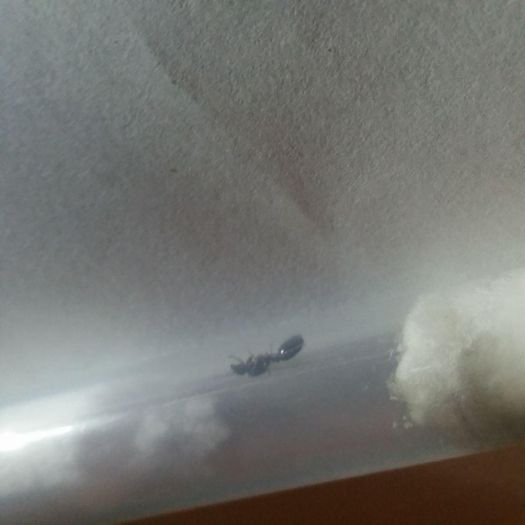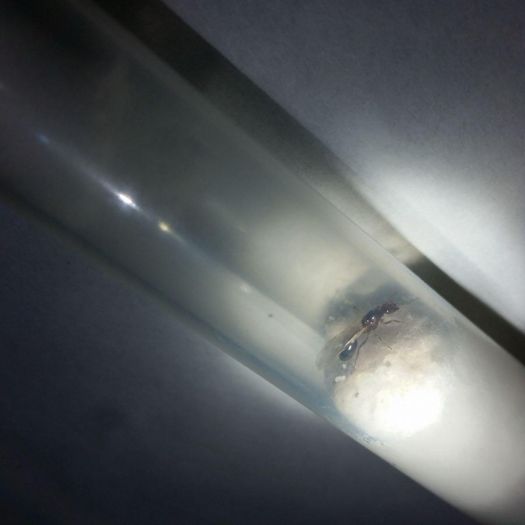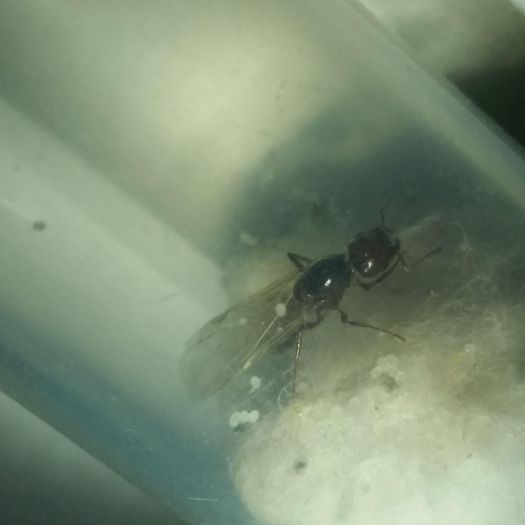Hello every one, I have found my first (and only) Queen so far.
Found this ant on the sidewalk. At first I thought it was male because of various shapes it had but it has been almost a week and a half in a test tube and its still alive and has 20+ eggs. The eggs are the size of a pinhead and the same white as my cotton so I do not know how many for sure. Now when I caught this ant I was specifically hunting for Pogonomyrmex rugosus as identified here http://www.formicult...endale-arizona/. Lots of those nests within a reasonable distance from collections site. There is at least one other known but as of yet identified ant species nearby that I could be confusing this with and I say that because I did not expect this queen to have the red head or slender body. If I had to guess then a different Pogonomyrmex or the local fire ant. The unknown workers are mostly red with black gasters, two petiole nodes, and would be in the medium to large size range.
1. Location of collection: Sidewalk in Glendale,AZ
2. Date of collection: June 29 late morning, it rained the previous night
3. Habitat of collection: N/A
4. Length (from head to gaster): 5 to 8 MM (poor quality ruler)
5. Color, hue, pattern and texture: the majority of the ant is a dark brownish color, noticeably red head and some slight red in the gaster
6. Distinguishing characteristics: Bite and sting, 2 petiole nodes
7. Anything else distinctive: Still has wings, long slender body, smallish head, gaster is more long than fat and round. The mandibles are smaller/weaker looking than I would have expected if this is a P. rugosus
8. Nest description: N/A
Behavioral note: Queen has been messing with the cotton on both sides of the tube quite a bit. At first worried it was trying to escape but checking in on it later it seems to be using the cotton like a substrate and forming it, some of the eggs are in these formations. You can almost see a few in the picture.
picture taken with a camera phone and was the only one to turn out in the set, will take more if needed.

[edit] Three more pictures.



Thanks in advanced for any help provided.
Edited by Origional_Username, July 14 2016 - 8:36 AM.
















